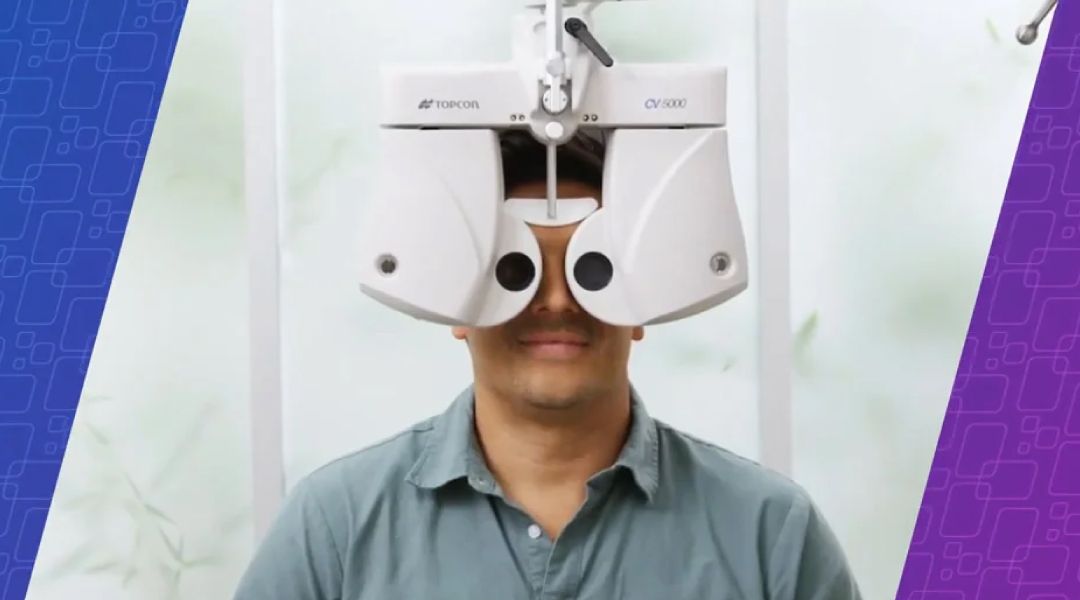Exploring Digital Refraction Systems

Read time: 4 minutes
The Future of Optics
Urban Optiks Optometry utilizes the latest cutting-edge automated diagnostic and refractive exam equipment available to deliver the most precise vision correction possible. Through our advanced technology and expertise, our doctors are able to deliver an experience and degree of precision not typically found in practices that utilize traditional manual eye exam equipment.
The field of optometry has experienced a revolutionary transformation with the introduction of sophisticated diagnostic equipment. Traditional methods of eye examinations, involving complex lenses and subjective patient feedback, gave way to sophisticated digital technologies that provide precise, efficient, and patient-friendly solutions.
One of the biggest components of a comprehensive eye exam is the refraction, which is the process of determining the correct prescription for eyeglasses or contact lenses by measuring how light is bent as it passes through the eye. Our optometrists utilize several pieces of equipment that collectively makeup what is called a Digital Refraction System.
Understanding Digital Refraction
Digital Refraction Systems represent a complete shift in the way refractive errors are diagnosed and corrected. Unlike traditional methods where patients read letters from a chart, digital refraction involves utilizing computer-based interfaces and advanced algorithms to measure refractive errors. This digital approach provides a more comprehensive and accurate assessment of the eye, enabling optometrists to prescribe tailored corrective lenses with unprecedented precision.
The Technology Behind Digital Refraction Systems
Wavefront Analysis and Aberrometry: Digital Refraction Systems employ wavefront analysis and aberrometry (a method of capturing the wavefront of an ocular system) to map the unique imperfections in an individual’s optical system. By analyzing how light waves pass through the eye, these systems create a detailed, personalized map of the patient's visual errors, allowing for highly customized corrective measures.
Auto-Refractors and Phoropters: Auto-refractors, a core component of digital refraction, automatically determine the patient's refractive error, significantly reducing the time required for the examination. Phoropters, integrated with digital interfaces, allow optometrists to fine-tune prescriptions efficiently and with minimal patient discomfort, leading to a more pleasant experience.
How is This Technology Beneficial to Your Eyecare Professional?
It's beneficial to your eyecare professional in a variety of ways including precision, efficiency, and, importantly, patient satisfaction.
- Digital Refraction Systems offer enhanced precision and accuracy: Digital systems provide highly detailed and accurate refractive data, enabling optometrists to prescribe lenses that address even the subtlest visual imperfections.
- Efficiency and Time-Saving: Automated measurements and intuitive interfaces streamline the examination process, allowing optometrists to serve more patients effectively, thus optimizing their practice’s efficiency.
- Improved Patient Experience: Minimized guesswork and the ability to visualize the impact of different prescriptions in real time create a more interactive and engaging experience for patients.
How is This Technology Beneficial to You?
Personalized care and enhanced understanding are benefits for patients.
- Tailored Prescriptions: Digital Refraction Systems enable optometrists to prescribe lenses tailored to a patient's unique visual profile, ensuring optimal clarity and comfort.
- Real-Time Simulation: Patients can witness the impact of different prescriptions in real-time, fostering a deeper understanding of their visual needs and enhancing their confidence in the prescribed lenses.
- Fast and Convenient Examinations: The efficiency of digital systems means shorter examination times, reducing patient discomfort and making eye examinations a more convenient and less time-consuming process.
The Takeaway
Digital Refraction Systems have undeniably redefined the way optometrists diagnose refractive errors and prescribe corrective lenses. By leveraging cutting-edge technology, these systems offer unparalleled precision, efficiency, and patient satisfaction. As the integration of AI and telemedicine continues to shape the landscape of optometry, the future holds the promise of even more accessible, accurate, and personalized eye care services. Embracing the digital revolution in vision care, optometrists and patients alike step into a future where clear, comfortable vision is not just a possibility but a digital reality.
Get to know all of the technology utilized during a comprehensive eye exam.
Share this blog post on social or with a friend:
The information provided in this article is intended for general knowledge and educational purposes only and should not be construed as medical advice. It is strongly recommended to consult with an eye care professional for personalized recommendations and guidance regarding your individual needs and eye health concerns.
All of Urban Optiks Optometry's blog posts and articles contain information carefully curated from openly sourced materials available in the public domain. We strive to ensure the accuracy and relevance of the information provided. For a comprehensive understanding of our practices and to read our full disclosure statement, please click here.


















